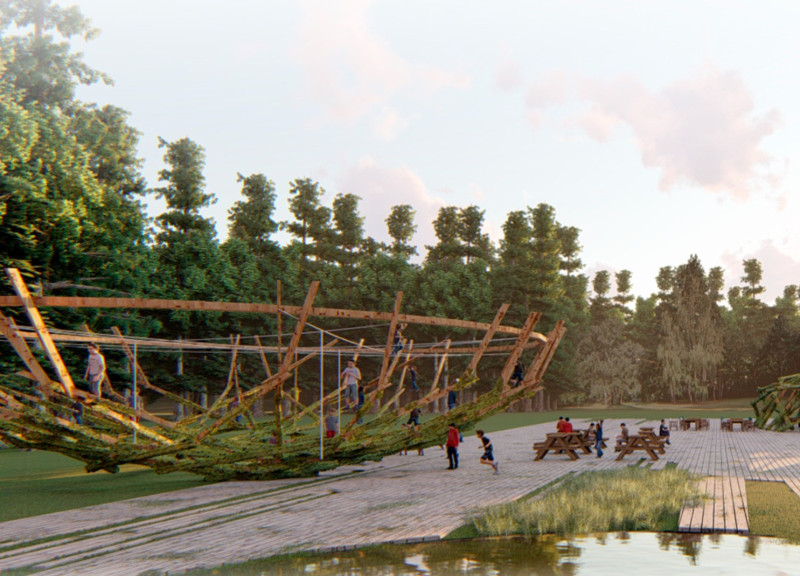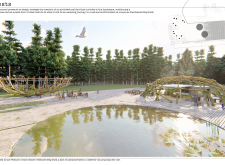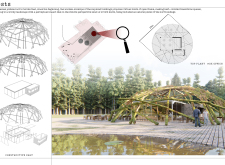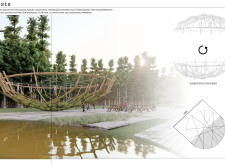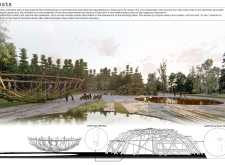5 key facts about this project
The proposal for Kemeri Bog Park is located in Latvia, an area rich in natural beauty and ecological significance. The design integrates with the landscape, serving as an access point that encourages exploration of the wetland area. This concept aims to bridge the man-made and natural environments, focusing on enhancing the visitor experience through thoughtful design that draws from the imagery of bird nests.
Concept and Design Approach
The approach emphasizes a strong connection to the landscape. Closed spaces are designed to avoid a fully enclosed feeling. Instead, they feature a wooden envelope that creates visual boundaries with open frames. This design choice fosters a light and airy atmosphere, allowing for half-covered transition spaces that harmonize with the surrounding trees and plants.
Visitor Interaction and Educational Spaces
The outer areas are designed to be interactive and educational, encouraging visitors to learn about the local ecosystem. These spaces are intended for various activities, offering opportunities for teaching, exploration, and engagement with nature. The goal is to deepen the understanding and appreciation of the wetland environment and its inhabitants.
Materiality and Structural Systems
Specific materials are chosen to maintain aesthetic coherence and function. Wooden boards echo the existing paths, reinforcing a consistent look throughout the park. Arches are built using a straightforward metal joint system, which allows for efficient assembly. Inverted domes are supported by steel tensioners that help manage the forces acting on the structure, ensuring stability and durability over time.
The design includes a wooden esplanade that connects different activities, promoting flow and interaction throughout the park. This feature is both functional and attractive, enhancing the overall experience while allowing visitors to appreciate the serene beauty of the landscape.


